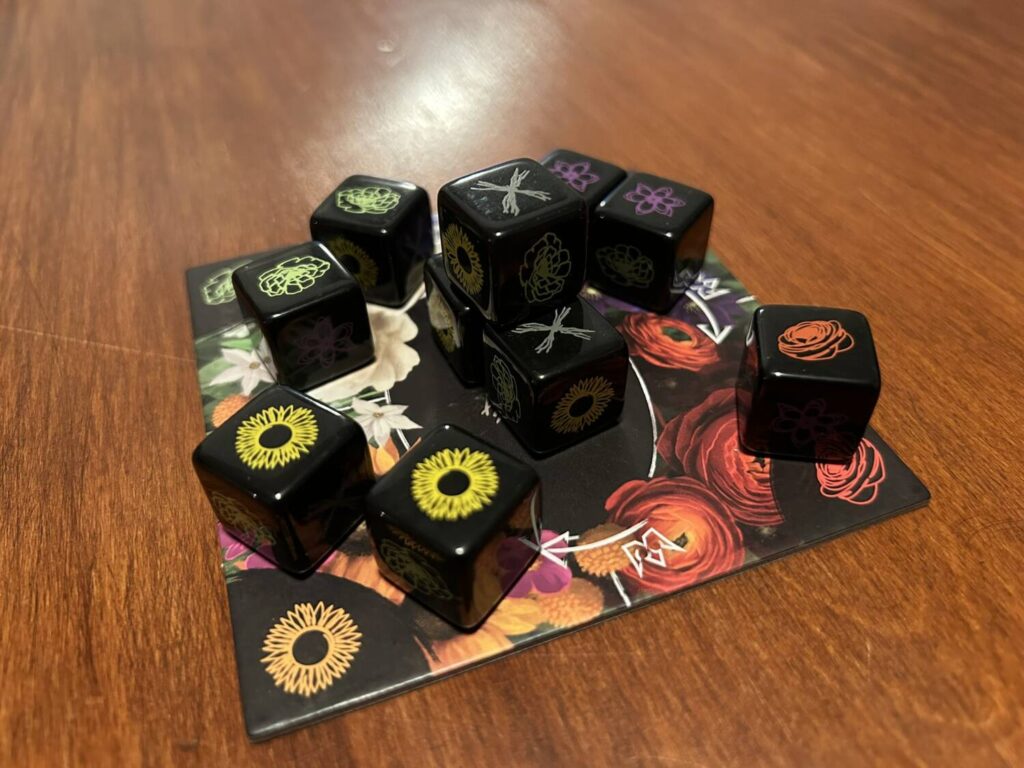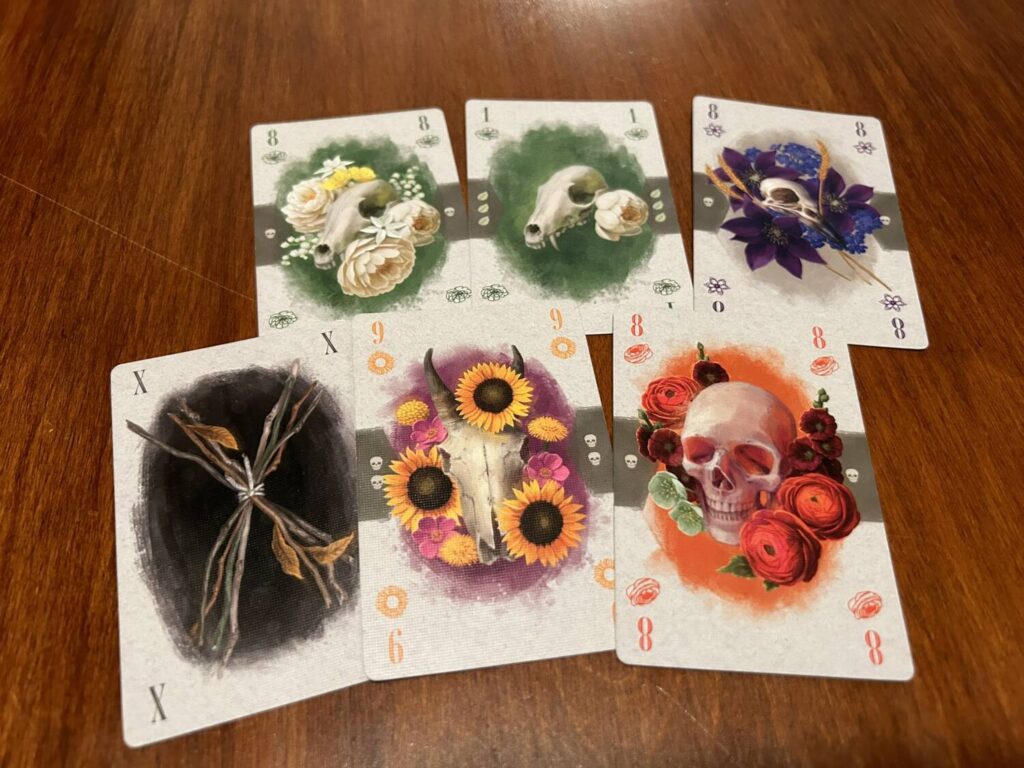Disclosure: Meeple Mountain received a free copy of this product in exchange for an honest, unbiased review. This review is not intended to be an endorsement.
My first play of Mori was one of the least impressive gaming experiences of recent memory. Not for one moment did it work. All four of us were miserable. The rules were impermeable and the experience was entirely flat.
“I can’t believe I have to play this again,” I grumbled as I took the subway home.
So I Played It Again
The next night, I brought it out for a different group. “This is Mori. I played it last night, and it wasn’t particularly good, but if there’s a group that can find the beauty in a trick-taker, it’s this one.”
Mori is a bit of an odd bird, welding about as much onto a “simple” trick-taker as I think the genre can withstand. We start in familiar territory. There are four suits, each with cards from 0-10. It’s a must-follow game. The highest card in the led suit wins, unless someone has managed to play a trump card.
This brings us to the first wrinkle: the trump suit depends on the led suit. Each suit corresponds to a season, and each season is trumped by the season that comes next. Winter always loses to Spring, which always loses to Summer, and so on.
The winner adds all the cards from the trick to their score pile, then takes a six-sided die from the middle of the table.
Yes, a die.

Mori comes with a big ol’ stack of custom black dice, rolled at the beginning of each round. The faces of the dice correspond to the suits, and you take a die of your choice each time you win. These dice can be played in lieu of a card, and are under no obligation to follow. If you lead with a rose, I can play my sunflower die, even if I have three rose cards staring me in the face. Though dice are considered weaker than any card, they can win. It’s a matter of playing a trump die when nobody else can play a trump card.
Some of you may be doing a bit of quick math here. I’ve accounted for four sides of each die. What about the other two? Those are marked with X’s.
X’s act as a sort of fifth suit in Mori. In addition to the dice, each player starts the round with two X cards in hand. These, like the dice, can be played into any trick, and it is highly unlikely they’ll win. Even if an X does win, worse things have happened. An X on its own is harmless. It’s the aggregation you have to watch out for when the time comes for round scoring.
First things first: the round ends when the supply of dice in the middle runs out, not when players run out of cards. All the cards are worth anywhere between -2 and 3 points. Any cards you have left in your hand at that point go into your scoring pile. Keep in mind, the players who won tricks got dice, and if they played those dice, they may have more cards left to score. Additionally, the player with the most X’s loses one point for every X they’ve got. The player with the second-most X’s, on the other hand, gains a point for every X they have.
As I said, Mori is a bit of an odd bird.
My second game was significantly more interesting. It took a round or so for everyone to settle in, but settle in they did, and the response was unanimously positive. Exceptionally so.

And Again
Mori really is approaching the upper limits of what I think a trick-taking game can expect to get away with. It is often difficult to remember what the trump suits are, in part because there’s no indication of the season on any of the cards. Beth Sobel’s art is characteristically stunning, but the cards could be better-designed for legibility. The yellow suit in particular is very hard to read from across the table, which gets annoying.
Once you get the hang of the thing, Mori is deeply satisfying. The value of any given card is inversely proportional to its power. A 10 is worth -2, while a 0 will net you 3. It isn’t about coming out swinging, trying to win every trick you can. Rather, Mori is a game about bleeding yourself of the poison in your hand and trying to hold on to the good cards. It’s about seizing moments of minimal loss for long term gain.
And Again
Would I recommend Mori to everyone? No, absolutely not. I suspect, when I submit this for edits, that half the Meeple Mountain team will respond in horror to what I’ve described. It requires patience so you can settle into it, and a sort of patience that not everyone will want to give it. That is entirely fair, and I wouldn’t begrudge anyone for putting it down and walking away.
Still, there’s no question that Mori merits its place at my table. The difference in texture alone between a round with a ton of rolled X’s and a round where the only X’s are the ones on everyone’s cards is fascinating. Above all, Mori is an endlessly interesting design, and it is interesting enough that I don’t particularly care whether or not I think it’s “good.” I find myself grateful that this bizarre experiment exists. Mori isn’t for everyone, but if it’s for you, you’ll have the time of your life.











